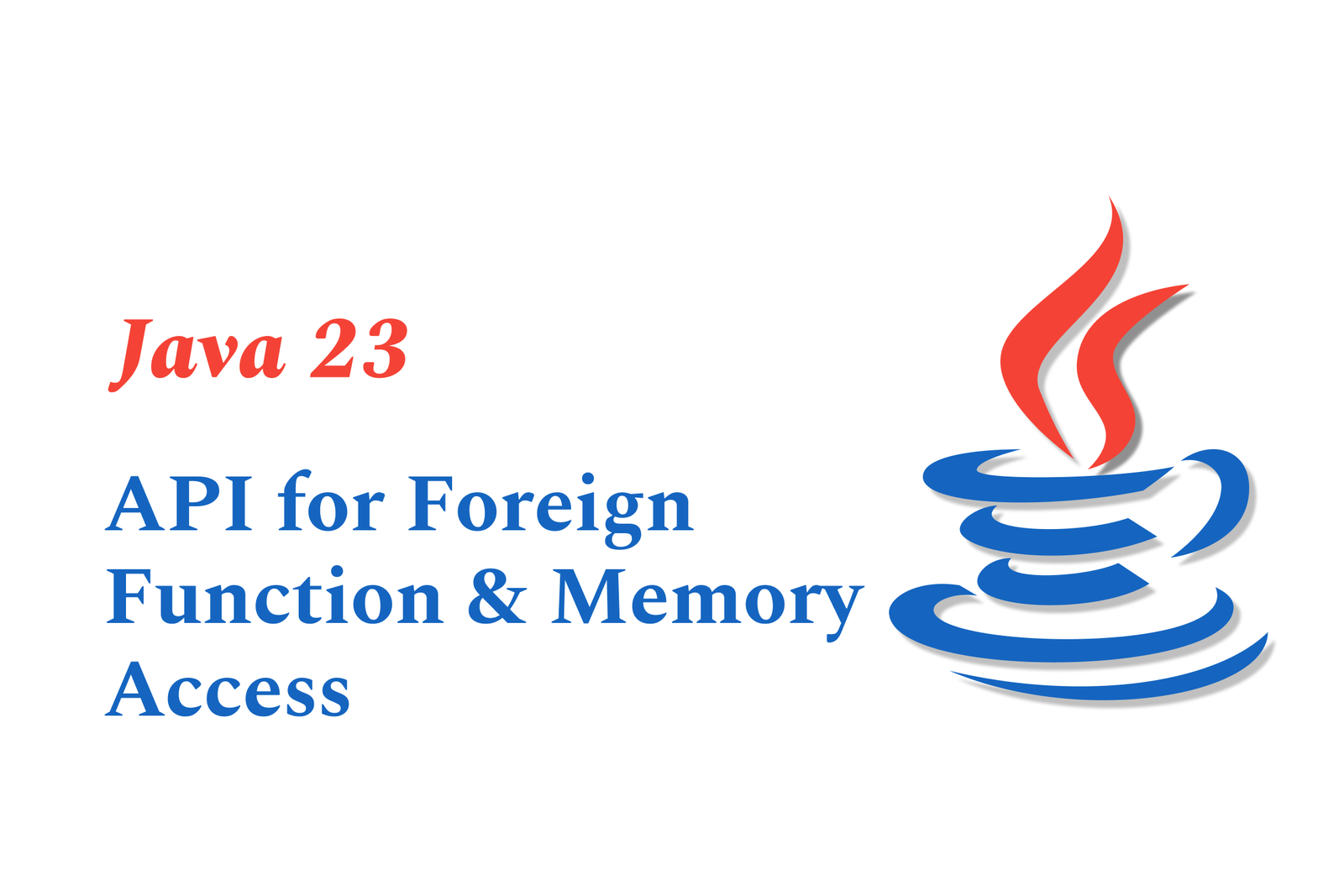Java 23 API for Foreign Function & Memory Access
Java 23’s Foreign Function & Memory Access API enables Java programs to safely call native libraries and access off-heap memory, simplifying interoperability with non-Java code while enhancing security and performance compared to traditional JNI methods.
Java 23 API for Foreign Function & Memory Access
1 ) Introduction to Foreign Function and Memory (FFM) API
The Foreign Function and Memory (FFM) API in Java enables Java programs to interoperate with code and data outside the Java runtime environment. It allows calling native libraries and processing native data safely, avoiding the complexities and dangers posed by the traditional Java Native Interface (JNI). This API empowers Java applications to invoke foreign functions (code outside the JVM) and access foreign memory (memory not managed by JVM) securely.
2 ) Purpose and Advantages
The FFM API provides a safer and more straightforward way to call native code compared to JNI.
It improves security, reduces brittleness, and simplifies memory handling.
Enables leveraging performance critical native libraries or direct hardware interaction while maintaining JVM's stability and security.
3 ) Core Components and Package
The API is encapsulated in the `java.lang.foreign` package.
Key elements include handling on heap and off heap memory, memory segments, and arenas that govern memory management.
Facilities are provided for structured memory access and layout definitions to safely interact with native data.
4 ) Key Features and Topics Covered
On Heap and Off Heap Memory: Differentiating memory managed by JVM and external memory.
Memory Segments and Arenas: Abstractions for grouping and managing foreign memory lifetimes.
Calling C Library Functions: Mechanisms to invoke native C functions easily from Java.
Upcalls: Allow Java code to be passed as function pointers to foreign libraries, enabling callbacks.
Handling Foreign Functions Returning Pointers: Managing native pointers effectively.
Memory Layouts and Structured Access: Defining and accessing complex data structures in native memory.
Checking Native Errors: Utilizing `errno` or similar error indicators for robust error handling.
Slicing Allocators and Memory Segments: Subdividing memory for focused and efficient access.
Restricted Methods and Use of Tools like jextract: Additional safety and tooling support for native code integration.
5 ) Background and Evolution
The FFM API is defined by JEP 454 and was previewed in Java 21, becoming more stable in subsequent releases like Java 22 and 23.
It reflects a gradual shift in Java towards “integrity by default,” limiting the use of unsafe APIs and promoting safer native access.
The API aims to replace JNI by offering improved performance as well as enhanced safety and ease of use.
6 ) Industry and Developer Impact
Enables developers to combine the robustness of Java with the performance and capabilities of native code.
Reduces the risk of memory leaks, crashes, and bugs typically associated with JNI.
Facilitates advanced use cases such as system level programming, hardware interaction, and use of optimized native libraries within Java applications.
Summary
The Java 23 Foreign Function and Memory Access API is a modern, safer, and more efficient framework for native interoperability. By abstracting and simplifying native memory access and foreign function calls, it significantly enhances Java developers’ ability to integrate native libraries with minimal risk and complexity, representing a pivotal advancement in the Java platform's evolution.
https://justacademy.in/news-detail/ios-19?s-new-widgets:-design-&-development-tips
https://justacademy.in/news-detail/apple-vision-pro-sdk-launch:-ios-apps-for-xr
https://justacademy.in/news-detail/swift-package-manager:-new-features-for-modular-apps
https://justacademy.in/news-detail/react-native?s-multi-language-support-expands
https://justacademy.in/news-detail/ios-19-new-game-controller-support-and-apis
Related Posts
In 2025, top Angular libraries offer modern, feature-rich components and tools for building dynamic web apps. From powerful data grids to low-code platforms like UI Bakery, these libraries enhance development speed, UI design, and scalability, making them essential for Angular developers.
Migrating from AngularJS to Angular 17 involves gradually upgrading your app by running both frameworks together using tools like ngUpgrade, rewriting components in TypeScript, and adopting Angular’s modern architecture to enhance performance, maintainability, and long-term support.
Angular state management tools help organize and handle app data efficiently, improving scalability and maintainability. Popular options include NgRx for robust, RxJS-based patterns, and newer Signal Store solutions that offer simpler, reactive approaches integrated tightly with Angular’s latest features.
RxJS in Angular empowers developers to manage asynchronous data streams with powerful operators like `forkJoin`, `combineLatest`, and `zip`. Mastering these key operators in 2025 is essential for building efficient, reactive applications that handle complex event sequences seamlessly.
Angular performance optimization in 2025 focuses on improving app speed and responsiveness by using techniques like OnPush change detection, lazy loading, efficient data caching, and AOT compilation. These practices reduce load times, enhance user experience, and ensure scalable, fast Angular applications.
In 2025, Angular remains preferred for large-scale, enterprise apps with its robust, all-in-one framework, while Vue attracts developers seeking simplicity and fast development for smaller projects. Both frameworks excel, with choice driven by project needs and team expertise.
Angular Signals are a new reactive primitive in Angular 16 that enable fine-grained, efficient change detection by automatically tracking dependencies and updating only affected parts of the UI. They simplify state management and boost app performance, revolutionizing Angular's reactivity model.
Angular interview questions to prepare in 2025 focus on core concepts like components, directives, data binding, routing, and dependency injection, along with TypeScript mastery and latest Angular features to ensure strong practical knowledge for building scalable, efficient web applications.
AngularJS reached its official end of support in January 2022, meaning no further updates or security patches. To ensure app security and performance, developers should consider migrating to modern Angular versions or seek third-party long-term support options if immediate migration isn’t possible.
The Angular Roadmap 2025 highlights upcoming features focused on improving developer experience and performance, including zoneless Angular, Signals integration, enhanced Forms, async data handling, improved HMR, and expanded Angular Material/CDK enhancements, driving modern, efficient web app development.










